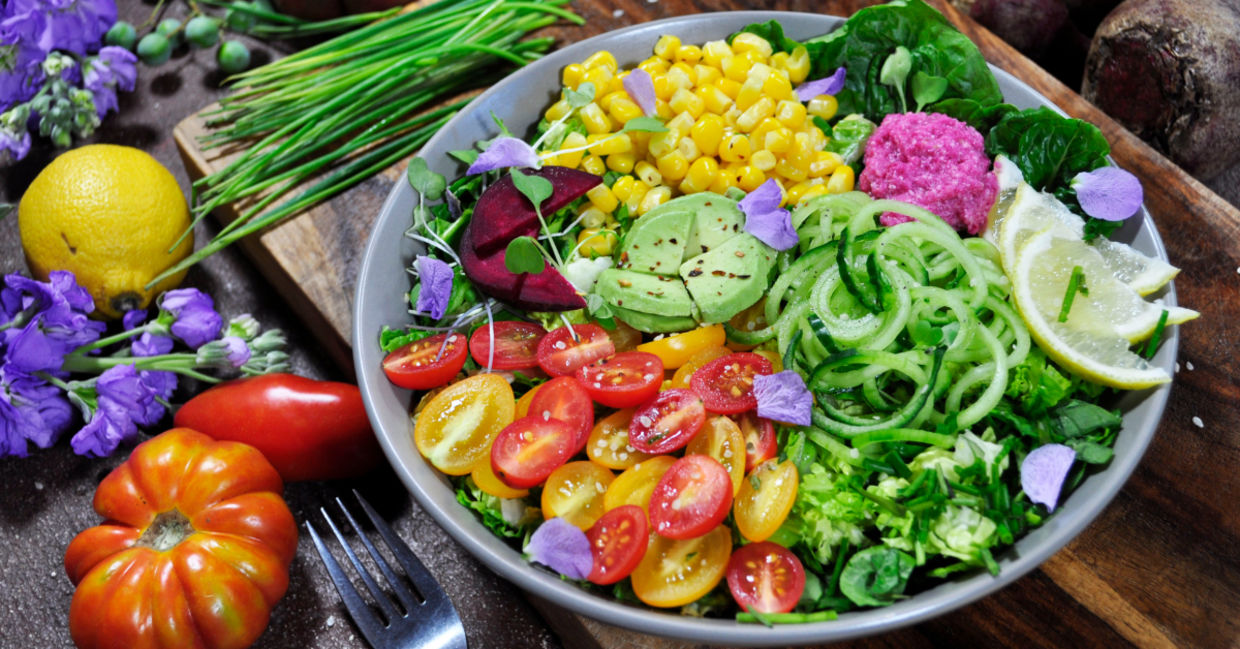
(Wild As Light / Shutterstock.com)
Eating green is just so clean! There are many tips to help turn that vision of a plant-based diet dream into reality. So move over meat – plant food can supplant in these five easy ways!
A plant-based diet means many things be it vegan, or eating fish, dairy, and eggs. On the whole, it means having more whole plant foods. This includes whole grains, vegetables, fruits, legumes, nuts, and seeds, according to EatingWell.
Trading out meat for greens is healthy, offers increased energy, and will save money at the grocery store, according to Treehugger. A meatless diet need not be bland, boring, and lots of work. On the contrary, it can be delicious and exciting! Although switching over to a vegetarian diet may be enticing to many, for others it is daunting. Following these five hacks may just make that culinary transition feel seamless and adventurous.
View this post on Instagram
Start out slowly
Going cold turkey (literally) never seems to work when making a life change. So when starting a plant-based diet, eat with one vegetarian meal a week, suggests Treehugger. Make Monday night dinner a Meatless Monday. Or, eat vegetarian or vegan meals every day until dinner time, then have meat in the evening.
This is a nice, slow introduction to a plant-based diet. After a while, the meatless options may seem more appetizing and energizing than the heavier meat dishes.
Read, learn, and read some more!
Head to a bookstore, select a few enticing vegetarian cook books, find a cozy chair, and dream! Buy the best books or write down some recipe ideas.
Part of the learning curve involves knowing the ingredients in food labels. Many foods that one assumes are vegetarian actually contain meat or dairy products. Ingredients to look out for, cautions Healthline, are: gelatin (animal collagen in marshmallows, jello and fruit snacks); whey (a dairy byproduct found in breads and snacks); casein, (a dairy protein in non dairy creams, soy cheese, and more); l. cysteine; and honey.
Use a chart for swapping ingredients and keep it handy
Everyone’s favorite meat dish has a vegetarian counterpart. In Healthline’s handy swap chart, eggs are swapped for ground flax or chia seeds: milk is replaced with coconut or rice milk; cheese is replaced with nutritional yeast, soy or cashew cheese; and meat is swapped with lentils, mushrooms, tofu, tempeh, seitan, textured vegetable protein, and even jackfruit!
Make a menu plan
Armed with knowledge about ingredients and a handy swapping chart, it is time to build a menu. This is important as vegetarian meals can take time to prepare. Those who decide to pull together a healthy meal at the last minute may reach for unhealthy vegetarian options that include empty carbs, cautions Treehugger.
A big beginner’s mistake is to replace a meat meal with a bagel, fries, or vegan junk food. This is actually less healthy than eating the meat! Instead, make a meal plan and be prepared.
View this post on Instagram
Be forgiving
This helpful advice from the live-in kitchen blog is very important. As mentioned before, it is not about going cold turkey. And if that turkey is irresistible, have some! It is okay as tomorrow is another plant-based day.
When one is forgiving and gentle, the chances of success may be higher than a rigid, stern approach. Another tip when one feels like they may slip is to have a healthy snack on hand – always! Prepare trail mix, energy balls, or a bag of nuts before leaving the house. Perhaps the energy balls will win over the turkey and if not, tomorrow may be a brighter, plant-based day!
YOU MIGHT ALSO LIKE:
7 Plant-Based Foods That Contain More Protein Than Meat
Plant-Based Casein Could Be a Gamechanger for Vegan Cheese
Plant-Based Fine Dining is a Growing Trend







